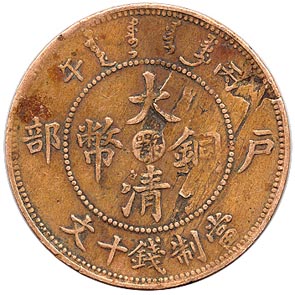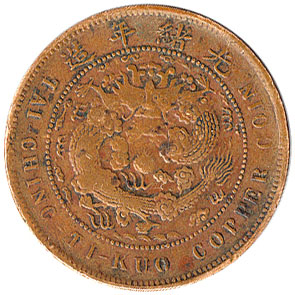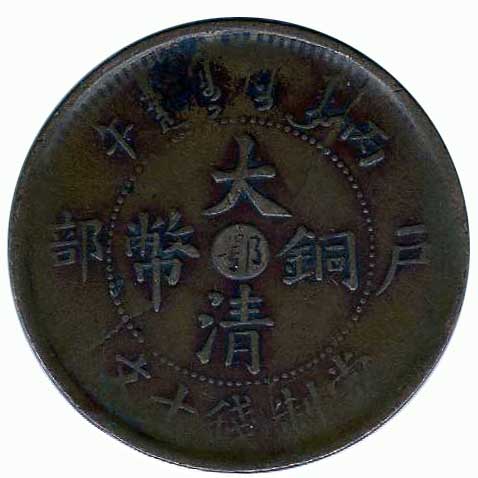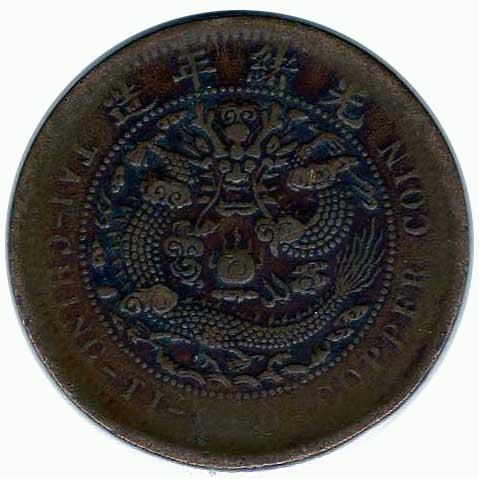| I post below is the coin images received from Mr. D G P of Fergus Falls, U.S.A. on Sat, 25 Nov 2000.
During the later Qing dynasty, the coinage of the ancient copper coins had been suspended in most of the provinces in China. The Mint masters found that they could not cast the tranditional cash coins economically, they stopped casting and engaged in another kind of circular coin struck by machinery without a square hole in the centre. It was known as "T'ung Yuan" [  copper coin], or "T'ung Hsien" [ copper coin], or "T'ung Hsien" [ copper cent] and or "Tung Pan" [ copper cent] and or "Tung Pan" [ copper plate] Each one is equivalent to ten cash. Later, there were also denominations of 1, 2, 5, 20, and 30 cash. copper plate] Each one is equivalent to ten cash. Later, there were also denominations of 1, 2, 5, 20, and 30 cash.Copper Coin was first minted in Kwangtung province in the 26th years of the "Kwang Hsu" reign (1900AD). |



